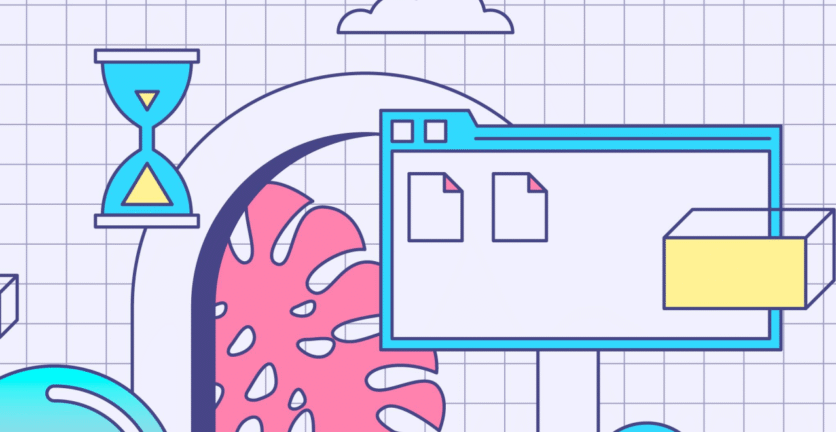A big part of our work as designers at a UX company is motivating users to take specific actions. The best way to do this is by understanding and applying principles from behavioral psychology, which allow us to guide users in the direction we want.
In this article, we’ll explore how research and principles from behavioral psychology can help us as UX/UI designers influence user behavior and improve our user interfaces.
Recognizing Behavioral Patterns
Evolutionary psychology suggests that even though we live in a modern, digital world, we still operate with the same mentality as in the Stone Age. Much of how we think and behave is rooted in cognitive processes developed over thousands of years.
One of these abilities is pattern recognition. We can derive meaning from a sequence of actions or outcomes without investing much energy in analyzing them. Pattern recognition allows us to act automatically based on limited information, usually after repeating a sequence of actions several times, like saving a document or adding a product to a shopping cart.
However, sometimes our brain’s pattern recognition can lead us to do things we didn’t necessarily intend.
Here’s a good example (from our office):

How many times have you entered a building or office where the light switch and doorbell look very similar? When you’re on autopilot, you might confuse the two. No matter how many signs or explanations you add, there’s still a lot of confusion between the door and light buttons.
Like most users, you’d rather not think before performing such a basic action.
We’re sure you know what these buttons mean without even seeing them—the shape and color alone are enough to convey their purpose.

As UX/UI designers, we emphasize using familiar elements in interface design to make actions easier and allow users to operate on autopilot. However, when users act automatically, they’re more susceptible to deception. Many companies exploit this by adding fees or products during a templated purchase process that users complete almost automatically.
Another example of misleading users is an ad that looks like a hair on the screen, subconsciously prompting users to swipe it away—when in fact, the goal is to get them to swipe up and open the ad (it’s actually kind of genius…).

Providing Rewards
A well-known experiment from the 1930s demonstrated the concept of “operant conditioning,” showing that animals will perform a certain action if they know it leads to a reward.
If we apply this psychological concept to our users, we can say that the mind prefers seeking rewards over performing other actions. Today, rewards are integrated into digital products for a different purpose—to keep users engaged, encourage them to seek information and rewards, and keep them in the system longer.
Rewards in digital product interfaces fall into three main categories: resource/information seeking, social encouragement, and self-reward. Here’s a breakdown:
Resource/Information Seeking
Our users have an uncontrollable urge to find and receive information. The wide variety of information sources today drives users to explore and learn more.
Leveraging this urge is evident on sites like Wikipedia, where every page has “related concepts” with intriguing titles that encourage users to click and discover more.

Another example is Reddit, the third most popular site in the US, which keeps users engaged with infinite scrolling. They removed page numbers at the bottom and replaced them with endless scroll, making users keep going and going.
Social Rewards and Encouragement
This stems from the psychological need to feel connected, accepted, important, and part of a community. Receiving approval or encouragement from others can be a powerful motivator, making us want to keep performing certain actions and even try harder.
Many apps use this psychological need to encourage users to engage more.
A good example is fitness apps, which let users share their workout achievements with the community and receive likes and comments. Social approval motivates users to train harder to get more positive feedback.
Social media is entirely built on social rewards. Every Instagram story, Facebook post, or tweet leaves us wondering how many likes, comments, and followers we’ll get. The more attractive, successful, or funny our photos and videos, the more engagement we expect. This is where filters come in—to enhance our appearance and increase our chances of positive feedback.
This search for social approval is what makes social networks so addictive!
Self-Reward
Naturally, we strive for a sense of achievement and feel satisfaction in pursuing our goals. Overcoming challenges and completing tasks gives us pleasure.
Many apps now incorporate gamification elements, motivating users to take on more challenging tasks by rewarding their efforts along the way.
Duolingo, for example, turns the difficult task of language learning into a fun experience by creating challenges and rewarding users with prizes and badges. Our desire to complete challenges, compete, and succeed keeps us coming back for more.
Many games use the freemium model—free download with in-app purchases called “micropayments.” The urge to play and seek these small rewards is so strong that game designers intentionally add waiting periods, knowing players would rather pay than wait.

Helping, Influencing, or Manipulating?
Is using psychology in interface design a bad thing?
Understanding how users think and behave is the only way we can design intuitive, meaningful, and enjoyable experiences that help users solve complex problems. But the same knowledge can also be used to mislead, deceive, or manipulate users for profit.
Using psychological principles is inevitable. Most designers use them to help and improve the user experience. But understanding, choosing, and applying psychology is what defines us as today’s digital product designers.





 Book a Call
Book a Call





